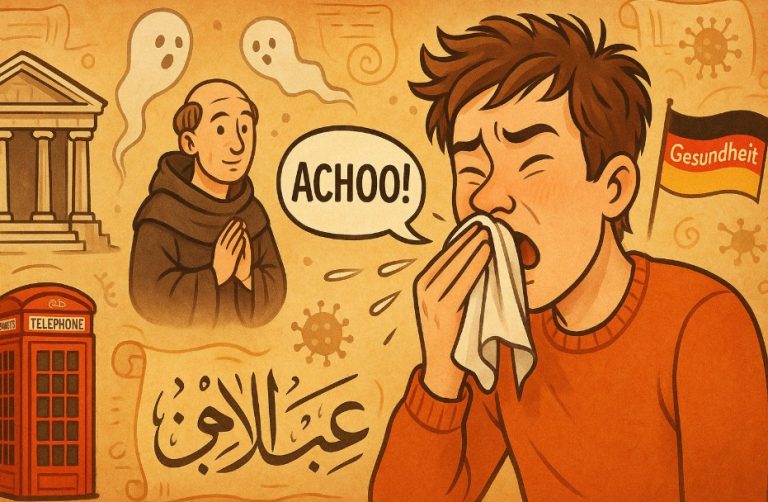Cats have a language all their own, and their tails are one of the most expressive tools in their body language arsenal.
While many assume that tail wagging means the same for cats as it does for dogs, the truth is far more complex. In the feline world, a wagging tail can signal anything from deep contentment to outright irritation.
Understanding why cats wag their tails is crucial for pet owners who want to build a stronger connection with their furry companions.
This guide explores the 15 most common reasons behind tail wagging, backed by behavioural insights and expert knowledge.
Understanding Cat Tail Movements and Their Meaning
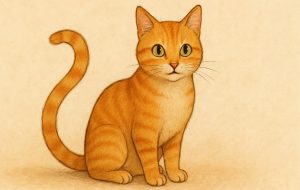
The tail is a flexible, muscular extension of a cat’s spine and plays a key role in balance, movement, and emotional expression.
Unlike dogs, cats often communicate subtle emotional shifts through tail flicks, twitches, and positions. Here are a few general interpretations:
- Held high and still: Confidence or contentment
- Low and tucked: Fear or submission
- Gently wagging: Mild interest or relaxed alertness
- Rapid flicking: Annoyance, stress, or overstimulation
- Puffed up: Alarmed or threatened
- Curved like a question mark: Friendly and curious
Tail movements can also be paired with ear position, pupil dilation, vocalisations, and body posture for a clearer interpretation.
15 Reasons Why Cats Wag Their Tails
1. Expressing Irritation or Annoyance
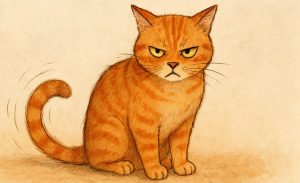
One of the most common and immediate reasons a cat may wag its tail is irritation. This behaviour often begins subtly, a small flick or twitch, and becomes more pronounced the longer the annoyance persists.
A rapidly swishing or lashing tail is typically a warning sign that the cat’s patience is wearing thin.
Situations that may trigger this include:
- Repeated attempts to pet when the cat wants to be left alone
- Loud noises or unexpected movements
- Presence of other pets infringing on their space
- Changes in routine or environment
Example: A cat sitting on a window ledge, seemingly relaxed, may begin lashing its tail if someone approaches too quickly or touches it unexpectedly. This is the cat’s way of saying, “I’m not in the mood.”
Failing to respond to this tail language could result in a hiss, growl, or even a defensive swipe.
2. Communicating With Other Cats or Humans
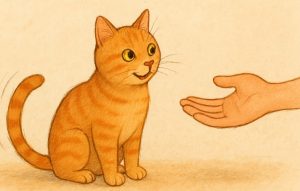
Cats use their tails not just as emotional indicators but as intentional social signals. Tail wagging or positioning can play a key role in intercat communication as well as in feline human interaction.
- To other cats: A neutral or gently swaying tail can signal non-aggression, especially in shared spaces. A raised tail is often used during greetings between friendly cats.
- To humans: Cats will often greet their owners with a tail held upright and slightly curved at the tip. In some cases, a slow wag can also suggest the cat is assessing the mood of the person or environment.
Interesting Fact: In multi cat households, cats often use tail language to manage group dynamics and avoid confrontation, signalling intent before making physical contact.
3. Hunting Instincts and Focus
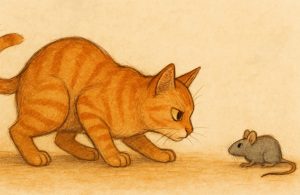
When a cat is stalking or preparing to pounce, whether it’s on a mouse, a dangling feather toy, or a moving shadow, the tail often twitches at the tip. This twitching is a tell-tale sign of heightened focus and anticipation.
Even indoor cats, who don’t have to hunt for food, retain strong predatory instincts. Their tails assist with balance and communication during these moments of “play hunting.”
Watch for this behaviour:
- Tail tip twitching while crouched
- Back legs tensed, ready to spring
- Eyes locked onto the target
Why it matters: Recognising this behaviour can help cat owners engage in meaningful play, providing both physical exercise and mental stimulation for their feline friends.
4. Feeling Playful or Curious
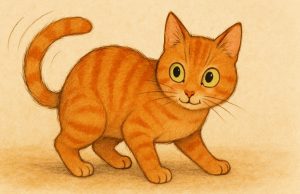
Cats exhibit a different type of tail wag when they’re feeling playful. The movement is often light, rhythmic, and fluid rather than aggressive or sharp. This usually accompanies wide eyes, forward-pointed ears, and a slightly crouched stance.
Common triggers for playful tail wagging include:
- Interactive play with toys
- Exploring a new environment
- Spotting insects or fluttering objects
Kittens are especially prone to exaggerated tail wagging during play as they develop their motor skills and social instincts.
Tip: A playful tail wag can often precede a “pounce and run” game, where the cat sprints around the house or stalks its owner playfully. It’s harmless, high-energy behaviour that should be encouraged.
5. Feeling Threatened or Defensive
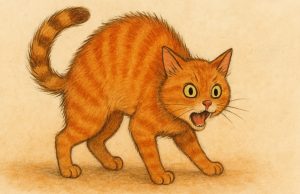
When a cat feels threatened or cornered, its body language becomes highly expressive, and the tail plays a crucial role in conveying this fear or defensive stance.
Key tail behaviours to watch for:
- Puffed-up tail: The fur stands on end, a phenomenon called piloerection, making the tail appear bushy.
- Upright but stiff wagging: Indicates the cat is ready to defend itself.
- Tail arched away from the body: Shows a combination of fear and readiness to attack if necessary.
Common triggers:
- Introduction of a new pet or person
- Loud household appliances like vacuums
- Visits to the vet or unfamiliar environments
In these situations, cats often adopt a full defensive posture arched back, flattened ears, dilated pupils, and the tail becomes a clear visual warning to “stay away.”
6. Signalling Pain or Discomfort
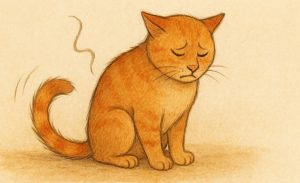
Not all tail wagging is behavioural some may point to physical discomfort or underlying medical conditions. Cats may wag or flick their tails in response to internal pain, joint stiffness, or skin irritation.
Signs to watch for include:
- Sudden tail flicking when touched
- Reluctance to be picked up or stroked near the back or tail
- Excessive grooming or biting at the tail
- Limp tail or holding it at an odd angle
Potential causes of tail-related pain include:
- Tail fractures or sprains (common in outdoor cats)
- Arthritis in the lower spine or hips
- Flea infestations, especially near the tail base
- Urinary tract infections (UTIs), which can make sitting or tail movement uncomfortable
Vet Insight: Persistent or unusual tail behaviour, especially when coupled with vocalisations or posture changes, should be assessed promptly.
7. In Deep Concentration
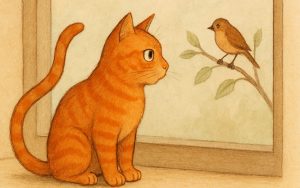
Tail twitching while sitting still often signals that a cat is mentally “locked in” on something. Whether it’s a bird outside the window or a rustling sound in the next room, their minds are working and their bodies are preparing to react.
This tail movement is usually:
- Minimal, restricted to the tip
- In sync with alert ear movements and focused eyes
- Occasionally followed by a sudden leap or sprint
Behavioural Note: This type of tail wagging is normal and healthy. It reflects a cat’s natural curiosity and environmental awareness. However, sudden or exaggerated twitching could point to overstimulation, particularly in older or more anxious cats.
Good Practice: Provide your cat with enrichment activities such as puzzle feeders, window perches, and hunting-style toys to satisfy their need for stimulation and focus.
8. Frustration Over Interrupted Activities
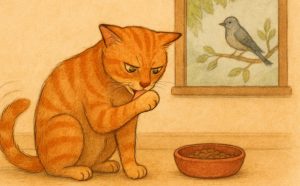
Cats are creatures of habit and highly value routine and autonomy. If they’re deeply engaged in an activity, such as grooming, eating, or watching birds, any interruption can spark visible frustration. Tail wagging, in this context, is their way of expressing displeasure.
Typical signs include:
- Tail lashing after being picked up mid-groom
- Irritated swishing if their food bowl is moved
- A flick of the tail before abruptly leaving the room
Frustration wagging is generally sharper and more abrupt than other movements. While it doesn’t always escalate into aggression, ignoring the warning signs can lead to unwanted scratches or a cold shoulder.
Pro Tip: Let your cat finish their activity if possible, respecting their space helps build trust.
9. Dreaming During Sleep
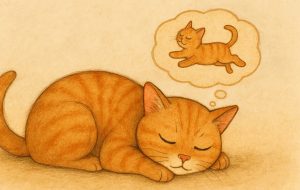
Cats experience rapid eye movement (REM) sleep just like humans, during which dreaming occurs. Tail twitching while asleep is common and usually harmless. These subtle movements may coincide with paw twitching, ear flicks, or even light vocalisations.
Why it happens: During REM sleep, the brain processes the day’s events. Tail flicks during this stage are often linked to play, hunting, or exploration memories.
It’s not a concern unless:
- The tail twitching is violent or causes the cat to wake suddenly
- The cat wakes disoriented or vocalises in distress
- The behaviour is new and frequent, particularly in older cats
In those cases, a vet consultation may be necessary to rule out sleep disorders or neurological issues. Otherwise, enjoy the show, it’s likely just a dream about catching that elusive feather toy.
10. Marking Territory
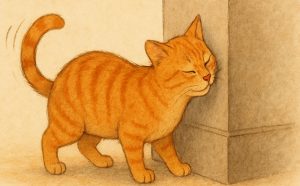
Cats are naturally territorial animals, and tail movements are often part of a larger display of marking behaviour.
They possess scent glands near the base of their tails, and when they wag or quiver their tails while rubbing against objects or even people, they’re depositing pheromones.
Behaviours linked to this include:
- Tail quivering while standing upright and rubbing walls or furniture
- Wagging tail while rubbing around your legs
- Marking vertical surfaces with a spray or tail vibration (in unneutered males)
Fun Fact: Neutered cats may still perform these tail behaviours, especially in familiar environments where they feel secure.
Territorial tail wagging is not a sign of aggression. In fact, it’s often linked to feelings of comfort and ownership over the space.
11. Petting Overstimulation
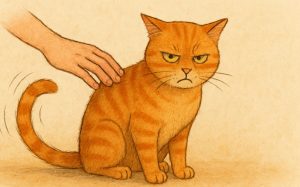
While many cats enjoy being petted, they can quickly become overstimulated, especially in sensitive areas like the lower back or base of the tail. Tail wagging during petting is a cat’s polite way of saying, “I’ve had enough now.”
Warning signs before overstimulation:
- Tail begins to twitch or thump against the surface
- Ears flatten or rotate back
- Muscles tense, back arches slightly
- A quick head turn to look at your hand
Failing to recognise these signals can result in a defensive nip or swat. It’s important to observe and learn your cat’s individual tolerance levels.
Tip for UK cat owners: Each cat has a “petting threshold.” Some tolerate long cuddles, while others prefer short, gentle strokes. Tail behaviour will always be your first clue.
12. Displaying Dominance or Submission
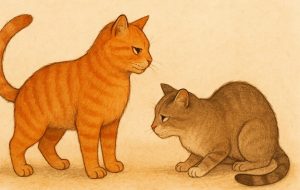
Cats use tail language as part of their complex social interactions. Tail position and movement can convey dominance, confidence, submission, or uncertainty.
- Dominant cats: Often walk with tails high and may swish slowly when asserting territory
- Submissive cats: Keep their tails low, wrapped around the body, or slightly tucked under
- Conflict avoidance: A wagging tail combined with slow blinking or head turns may diffuse tension between cats
In multi-cat households, observing tail language can help prevent fights. If one cat’s tail is upright and twitching while the other’s is low and flicking quickly, it’s likely a dominance issue is playing out.
Key Insight: Feline hierarchy is constantly negotiated through subtle body language tail movement being one of the most visible indicators.
13. Greeting or Welcoming Gesture
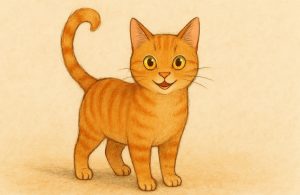
Cats don’t just wag their tails to communicate discomfort they also use them in greetings. A friendly cat often raises its tail in a relaxed “question mark” shape or quivers the tip slightly when approaching someone they know.
Friendly greeting tail signals:
- Upright tail with a gentle curve
- Tail lightly tapping the legs of their favourite human
- Quivering tail tip when meeting after time apart
This behaviour is most common in cats who are bonded with their owner or with other cats in the home. In rare cases, some cats may even wag their tails as they rub against a guest they’ve taken a liking to.
Positive cue: If your cat walks up with its tail up and begins purring or rubbing against you—congratulations, you’re one of their people.
14. Anxiety or Stress Reactions
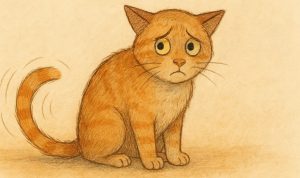
Tail wagging can also be a sign of internal distress. Unlike irritation or fear, which often comes with overt defensive behaviour, anxiety-related tail wagging tends to be subtle and prolonged.
Common anxiety triggers:
- Introduction of a new pet
- Moving house or changes in layout
- Loud noises like fireworks or thunderstorms
- Absence of the owner for extended periods
In these cases, tail movements are usually accompanied by:
- Excessive grooming
- Hiding or reduced social interaction
- Low vocalisations or mewing
Important: If anxiety continues long-term, consult a vet or pet behaviourist. There are many calming products available in the UK, such as pheromone diffusers (e.g., Feliway), that can ease feline stress.
15. Individual Personality Quirks
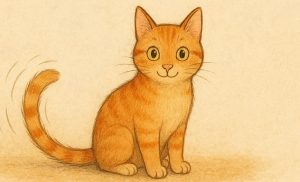
Just like people, cats have unique personalities, and their tail behaviours reflect that. Some cats wag their tails more frequently and in more varied ways, while others may be relatively still.
Tail movement quirks may depend on:
- Breed: Bengals and Abyssinians are known for animated tail language
- Age: Kittens are often more expressive, using their tails in playful bursts
- Upbringing: Cats raised with regular handling may be more relaxed in body language
- Temperament: Timid cats may hide tail signals, while confident cats use their tails like flags
Bottom Line: Over time, you’ll begin to understand your cat’s unique tail patterns. What means stress for one cat might be curiosity for another context and consistency are key to accurate interpretation.
Quick Guide to Cat Tail Movements and Their Meanings
| Tail Movement | Likely Emotion or Message |
| High and still | Confidence or friendliness |
| Curved like a question mark | Playfulness or mild curiosity |
| Tucked between legs | Fear or anxiety |
| Rapid lashing or thumping | Irritation or anger |
| Gentle swaying side-to-side | Alert or mildly interested |
| Tail tip twitching while lying down | Relaxed but aware |
| Puffed and upright | Feeling threatened or defensive |
How to Read Your Cat’s Tail Like a Pro?
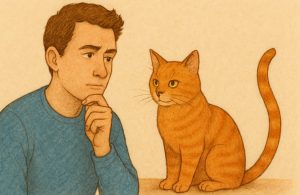
To fully understand what a cat’s tail is communicating, you need to observe:
- Environmental context: Is there a potential trigger?
- Vocalisations: Growls, meows, or purring add meaning
- Ears and eyes: Forward ears and wide pupils often indicate alertness
- Body tension: A tense body usually means distress or defensiveness
Building this awareness can help avoid miscommunication and make your cat feel more secure.
When to Worry: Medical Conditions Behind Tail Wagging
Some tail movements might indicate health concerns, especially if:
- The cat avoids being touched on the back or tail
- There is excessive grooming or hair loss
- The tail appears limp or shows signs of trauma
Common conditions to be aware of:
- Hyperesthesia Syndrome: Causes twitching and sensitivity along the spine
- Flea allergy dermatitis: Leads to tail-biting and twitching
- Spinal arthritis: Common in older cats
- Injuries: Tail trauma can result in lasting nerve damage
Recommendation: If you notice unusual tail behaviour, especially accompanied by other symptoms, contact your vet promptly.
Final Thoughts on Feline Tail Behaviour
Cats may be quiet, but their tails speak volumes. From subtle twitches to bold wagging, these movements reflect a rich emotional world and a sophisticated way of interacting with their surroundings.
For cat owners in the UK, understanding tail behaviour is not just about avoiding scratches, it’s about strengthening the human-feline bond. Recognising and respecting these signals leads to a happier, healthier relationship built on mutual understanding.
FAQs About Why Cats Wag Their Tails
What does it mean when a cat wags its tail slowly?
It usually indicates the cat is focused on something or is in a curious, slightly cautious state.
Why does my cat flick its tail when I pet it?
That’s a sign your cat might be getting overstimulated. Take it as a cue to stop or slow down.
Can tail movements indicate health problems in cats?
Yes. Unusual tail behaviour, especially if accompanied by changes in appetite or mobility, should be assessed by a vet.
Why do cats wag their tails while lying down?
Often, it means the cat is aware of something going on but doesn’t want to engage—mild annoyance or observation.
Is tail wagging a sign of a happy cat?
Unlike dogs, cats don’t usually wag their tails out of happiness. Other cues like purring and relaxed posture are better indicators.
How do kittens use their tails differently from adult cats?
Kittens may wag and twitch their tails more randomly as they’re still developing coordination and communication skills.
Are some cat breeds more expressive with their tails?
Absolutely. Breeds like Siamese and Bengals are known for their animated and communicative tails.




